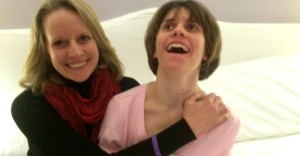Today is Rare Disease Day, a worldwide movement to raise awareness about rare diseases and their impact on patients’ lives. The effort targets the general public but also decision-makers such as policy makers and health professionals and biotech industry leaders.
I worked on the marketing communications team for a large, integrated health system for eight years. Early in my career, my mentor taught me not to focus too much energy on health awareness months, weeks and days at the expense of more strategic efforts. She said only a few of these movements really resonate with the general public, like Wear Red Day (always the first Friday in February), Heart Month, Stroke Month and Breast Cancer Awareness Month.
I Googled “health awareness days,” and Rare Disease Day didn’t even pop up. Kind of crazy, considering that 350 million people worldwide suffer from a rare disease.
In any case, the truth is that the best awareness efforts transcend these laser-focused, time-sensitive attacks on the diseases that rob grandparents of their 50th wedding anniversary date and mothers and fathers of the joy of seeing their kids graduate from high school and kids of the chance to grow up at all. The truth is that we should be talking about these diseases 365 (or sometimes, like in 2016, 366) days a year.
In 2012, I wrote a post about the amount of money the NFL spends to boost breast cancer awareness every October. In the post, I argued that we won’t save lives with pink chin straps or even great tag lines. We’ll “save them with smart research and strong advocacy efforts and strategic awareness tactics that rely on the strength and the magic of a great story.” And that’s where I still think the NFL largely misses the point.
We still have work to do in the rare disease community, too. How many people will change their Facebook profile photo to honor someone fighting a rare disease for the month of February, only to ditch the photo on March 1? Is a temporary message – or a Facebook profile photo, for that matter – going to save a life? Will rare disease be important to the world if it’s less important to the people most deeply affected by it the moment the sun sets on World Rare Disease Day?
The Facebook photos and denim ribbons and Rare Disease Day celebrations are great. But we need to think bigger. And as a society, we need to acknowledge the devastating impact of rare disease not just one day out of the year, but every day of the year. We need more collaboration between rare disease organizations and patients, university researchers and biotechs, community leaders and state and federal lawmakers. We need to be taking better advantage of the science we already have to treat these diseases. We need to better educate the public on how addressing rare diseases can help the greater good – by supporting economic development, improving our health system and laying the groundwork for more and better treatments for all diseases.
We’re making incredible progress on all fronts, but this fight has never been easy for my family, Taylor’s Tale or the greater rare disease community. I’ll never forget the day years ago when a friend tried to help my mother understand why she couldn’t make Taylor’s Tale or our fight against Batten disease a priority.
“But Sharon,” she said, “it’s just so…rare!”
Could my mother’s friend have said those words to her own daughter if she had been diagnosed with a life-threatening illness but had a chance to survive, as we still believed could be true for my sister in those days?
 Could she have said those words to Taylor, who suffers so much now that I don’t like to write about it on this blog anymore, and who never did a single thing to deserve Batten disease?
Could she have said those words to Taylor, who suffers so much now that I don’t like to write about it on this blog anymore, and who never did a single thing to deserve Batten disease?
This is an important time for the rare disease community. We have an incredible opportunity to accomplish something great. But we all need to do better for people like my sister. We need to be focused on developing treatments and bringing them to market for future Taylors – a task that will take lots of awareness but also strong science and tireless advocacy. Rare Disease Day only serves to ignite the conversation; now, it’s time to get to work.
This Tuesday on Capitol Hill, Taylor’s Tale will lead a breakout session on how to establish a state-level rare disease advisory council. If you’re in Washington, we hope you’ll join us to continue the conversation! View the legislative conference agenda.
